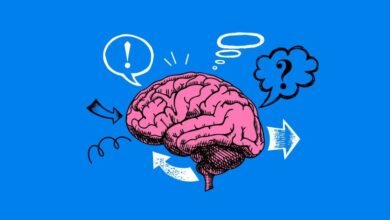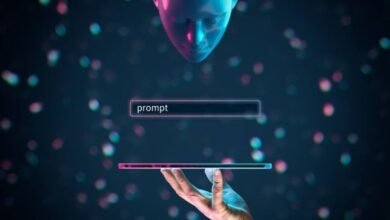How Educational Apps Are Driving Innovation In Learning


Explore The Future Of Education Through Technology
Tired of traditional textbooks? Educational apps are the future of learning! Learn how these dynamic platforms are making education fun, effective, and accessible to all. Educational apps are changing the game in learning; these tech-driven solutions are making education more engaging, personalized, and accessible than ever before.
For a long time, schools have been the main place for learning. Teachers taught students from books and blackboards. But things are changing fast. Gone are the days when learning was confined to the four walls of a classroom or limited to heavy textbooks. Technology, especially smartphones and tablets, has brought learning into our hands. Imagine a world where learning is as interactive as your favorite game, as convenient as checking your phone, and as tailored to your needs as your playlist. Educational apps are making this a reality, driving innovation, and setting the stage for a future where education knows no boundaries.
According to HolonIQ [1], the education market is one of the largest and fastest-growing sectors worldwide, expected to reach $10 trillion by 2030. The rise of educational apps has unlocked new possibilities, making learning more accessible, engaging, and personalized than ever before. These digital tools are not just enhancing traditional education—they’re revolutionizing it.
Whether you’re a student eager to explore new subjects, a teacher looking to inspire and connect, or a parent wanting to support your child’s growth, educational apps are bridging gaps, breaking down barriers, and unlocking new opportunities for everyone involved. This guide delves into how these apps are driving a new era of learning, making it more engaging, inclusive, and future-ready.
The Evolution Of Education
- Traditional schools faced many challenges
Classrooms were often crowded, and it took a lot of work for teachers to pay attention to every student. Learning from books could be boring and it was tough for students who learned differently. - Technology started to change things
Computers came into classrooms, but it was the rise of smartphones and tablets that made a difference. These devices opened up a world of possibilities for learning. - Educational apps became the answer
They could offer something that traditional schools couldn’t—a learning experience that was tailored to each student.
What Makes Educational Apps Special?
Educational apps stand out because they combine technology’s power with modern learners’ needs. They are designed to be interactive, engaging, and adaptable, catering to different learning styles and paces. Unlike traditional methods, educational apps can offer personalized experiences, allowing learners to focus on areas where they need improvement while progressing through topics at their own speed. Additionally, these apps often use gamification, quizzes, and multimedia content to make learning fun and engaging, helping to maintain the learner’s interest.
Types Of Educational Apps
Educational apps are like having a smart and friendly tutor right in your pocket. They make learning fun and easy. Here are some popular types:
- Learning games
These apps turn lessons into exciting games. You can play quizzes, solve puzzles, and compete with friends while learning new things. - Language learners
Want to learn a new language? These apps teach you to speak, read, and write with fun activities. - Study buddies
These apps help you memorize information like vocabulary, dates, or formulas. They use flashcards and quizzes to make studying fun. - Video lessons
Love watching videos? These apps have videos on everything from science to history. You can learn while having fun. - Online tutors
Need extra help? These apps connect you with teachers who can explain things clearly. - Exam preparation apps
Feeling stressed about a test? These apps help you study with practice questions and tips.
How Educational Apps Are Transforming Learning
1. Personalized Learning
Imagine having a teacher who knows exactly what you need to learn and how you learn best. That’s what eLearning apps can do. They use smart technology to figure out your strengths and weaknesses and give you lessons that match your learning style.
2. Engaging Learning Experiences
Learning should be fun! Educational apps use games, videos, and other cool stuff to make learning exciting. They turn boring subjects into adventures.
3. Accessibility And Inclusivity
Not everyone has the same opportunities to learn. Some kids might live far from a good school, or they might have particular learning needs. Educational apps can help break down these barriers. They can provide learning materials to kids in remote areas and offer tools for students with disabilities.
4. Data-Driven Insights
Educational apps can track your progress and see what you’re good at and what you need to improve. This information helps teachers understand their students better and plan more effective lessons.
5. Collaboration And Communication
Learning isn’t just about studying alone. It’s about working with others and sharing ideas. Educational apps can connect students with their classmates and teachers, making collaborating on projects and asking questions easier.
Top Technologies Shaping The EdTech Sector
The EdTech sector is undergoing a rapid transformation, driven by innovative technologies that are redefining the way we learn. Here are some of the key technologies shaping the future of education:
AI and ML are transforming education by creating highly personalized learning experiences. These technologies analyze vast amounts of student data to identify individual strengths, weaknesses, and learning styles. They can help students learn faster and better by giving them the right information at the right time. Additionally, AI can automate administrative tasks, freeing up educators to focus on more meaningful interactions with students.
VR and AR make learning more interactive by creating immersive experiences. Students can explore virtual worlds, conduct experiments, or visualize complex concepts, making learning more engaging and hands-on.
Blockchain is used in education to securely store and verify academic credentials. It ensures that certificates and records are tamper-proof, making it easier for employers and schools to validate qualifications.
-
Big Data And Learning Analytics
Big Data helps educators track student performance and identify those who may need extra support. Learning analytics use this data to personalize content, ensuring each student gets the right material at the right time.
Gamification makes learning fun by incorporating game elements like points, badges, and challenges. It boosts motivation and helps students develop important skills like problem solving and teamwork.
Cloud computing enables easy access to educational resources from anywhere. It supports remote and hybrid learning by storing and sharing materials online, allowing for collaboration and flexible learning environments.
Conclusion
Educational apps are proving that learning can be personal, engaging, and accessible to everyone. They are the future of education. By working together, teachers, parents, and app development companies can create a world where every child has the chance to reach their full potential.
Reference
[1] $10 Trillion Global Education Market in 2030Source link



